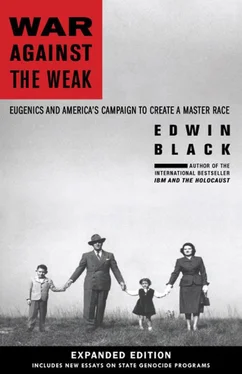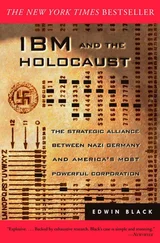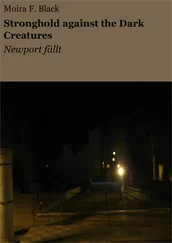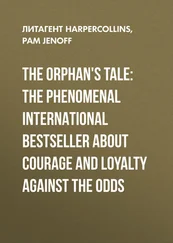Edwin Black - War Against the Weak
Здесь есть возможность читать онлайн «Edwin Black - War Against the Weak» весь текст электронной книги совершенно бесплатно (целиком полную версию без сокращений). В некоторых случаях можно слушать аудио, скачать через торрент в формате fb2 и присутствует краткое содержание. Город: Washington, DC, Год выпуска: 2012, ISBN: 2012, Издательство: Dialog Press, Жанр: История, на английском языке. Описание произведения, (предисловие) а так же отзывы посетителей доступны на портале библиотеки ЛибКат.
- Название:War Against the Weak
- Автор:
- Издательство:Dialog Press
- Жанр:
- Год:2012
- Город:Washington, DC
- ISBN:1-56858-258-7
- Рейтинг книги:3 / 5. Голосов: 2
-
Избранное:Добавить в избранное
- Отзывы:
-
Ваша оценка:
- 60
- 1
- 2
- 3
- 4
- 5
War Against the Weak: краткое содержание, описание и аннотация
Предлагаем к чтению аннотацию, описание, краткое содержание или предисловие (зависит от того, что написал сам автор книги «War Against the Weak»). Если вы не нашли необходимую информацию о книге — напишите в комментариях, мы постараемся отыскать её.
War Against the Weak — читать онлайн бесплатно полную книгу (весь текст) целиком
Ниже представлен текст книги, разбитый по страницам. Система сохранения места последней прочитанной страницы, позволяет с удобством читать онлайн бесплатно книгу «War Against the Weak», без необходимости каждый раз заново искать на чём Вы остановились. Поставьте закладку, и сможете в любой момент перейти на страницу, на которой закончили чтение.
Интервал:
Закладка:
The sterilization statute was updated in 1929, resulting in forced surgeries on forty-nine individuals. That law was overturned by the North Carolina Supreme Court for its lack of due process, leading to a prompt revision by the legislature. In this effort, the legislature was assisted by a number of local law schools, including the University of North Carolina Law School in association with the Duke Legal Aid Clinic. They followed Virginia’s law as a model. Virginia gave rise to the infamous Buck v. Bell case, a collusive lawsuit ultimately sanctified as the law of the land by the notorious 1927 Supreme Court ruling. Oliver Wendell Holmes, for the majority, wrote, “It is better for all the world, if instead of waiting to execute degenerate offspring for crime, or to let them starve for their imbecility, society can prevent those who are manifestly unfit from continuing their kind… Three generation of imbeciles are enough.” With that, a mother, daughter, and granddaughter were sterilized.
Buck vs. Bell opened the floodgates of mass sterilization in America, and states, such as North Carolina, felt they could proceed at high velocity to subtract unwanted citizens.
In addition to using Virginia as a model, North Carolina legislators and its eugenic advocates worked closely with Harry Laughlin, the head of the Carnegie Institution’s Eugenic Record Office located at Cold Spring Harbor on Long Island. Laughlin was arguably the central irrepressible force in America framing state-by-state legislation designed to eliminate “unwanted” segments of society. He worked in conjunction with the Municipal Court of Chicago, distributing a massive guidebook to passing similar legislation—now found constitutional—in every state in the union. He was also a principle conduit for Nazi eugenic theories in the United States. In 1937, Laughlin received an honorary degree from the University of Heidelberg for helping devise the Nuremberg Laws formulas that designated who was a full Jew and who possessed just a fraction of Jewish blood.
North Carolina eugenic officials also worked closely with the Human Betterment Foundation, a collection of openly rabid Nazi stalwarts located in Pasadena, California. Human Betterment Foundation founder and president, E. S. Gosney, had counseled Germany’s newly installed Reich leaders on proper eugenic enforcement, including courtroom “trials” where individuals were accused by prosecutors of hereditary defects and were obliged to prove otherwise with “evidence.” Gosney also maintained regular, congenial, and encouraging communication with Hitler’s chief Nazi doctor, Otmar von Verschuer, renowned for eugenic twin research. Verschuer’s assistant, Josef Mengele, continued his boss’s twin research with monstrous experiments in Auschwitz. The Human Betterment Foundation Annual Report for 1935 cited a congratulatory letter from fellow California eugenicist Charles Goethe to Gosney. After a 1934 trip to Nazi Germany, Goethe wrote: “You [Gosney] will be interested to know that your work has played a powerful part in shaping the opinions of the group of intellectuals who are behind Hitler in this epoch-making program. Everywhere I sensed that their opinions have been tremendously stimulated by American thought, and particularly by the work of the Human Betterment Foundation. I want you, my dear friend, to carry this thought with you for the rest of your life, that you have really jolted into action a great government of 60 million people.”
North Carolina’s Eugenics Board seemed less conscious of any state role, but was rather part of the broad movement of ethnic cleansing, in lockstep with Laughlin of Long Island, the Human Betterment Foundation in Pasadena, national race purification trends, and German eugenics. The Eugenics Board’s 1935 report, Eugenical Sterilization in North Carolina, A Brief Survey of The Growth of Eugenical Sterilization and a Report on The Work of The Eugenics Board of North Carolina through June 30, 1935 , was typical of dozens of similar agency reports and publications. In the forty-page 1935 report, its first textual page quotes two long pseudo-scientific explanations for the Board’s work. The first was from a publication openly attributed to “the Human Betterment Foundation, Pasadena,” and the second quoted the publication Eugenics , controlled by Laughlin and the American Eugenics Society. On page 7 of the report, Eugenics Board secretary R. Eugene Brown explains that North Carolina has patterned its efforts after Virginia, and indeed in a long block quote displays the opinion of Holmes, ending with the exhortation “three generations of imbeciles are enough.”
On page 8, Brown confirms that the law was done in tandem with “the model statutes set forth in The Legal Status of Eugenical Sterilization prepared by Dr. H. H. Laughlin of the Eugenics Record Office as a supplement to the annual report of the Municipal Court of Chicago for the year 1929.” On page 9, Brown sets forth the state’s sterilization targets, namely, “moral degenerates,” the so-called “feebleminded,” and “hereditary criminals.” On the same page, Brown quotes two paragraphs from the Nazi sterilization law. On page 10, the report guesstimates how many future unsavory citizens could be subtracted by sterilizing just one unwanted family, labeled the “Wake Family”: taxpayers could expect to save about $30,000 in social expenditures. On page 11, Gosney’s Human Betterment Foundation is again referenced, this time in a nine-point rationale for mass sterilization.
On page 29, a list of actionable “medical defects” includes “sexual promiscuity” and “pauper.” A four-page appendix compares North Carolina’s sterilization rate with those of all other American states and again cites Laughlin as the source. As much as North Carolina gauged its progress within the national and international eugenics movement, likewise the global movement maintained a close watch on North Carolina’s progress.
Laughlin and others held the view that the state’s population was riddled with unfit humans, and that their spawn had infiltrated the entire United States. In 1936, Laughlin was commissioned by Connecticut governor Wilbur Cross to undertake a “Survey of the Human Resources of Connecticut.” The purpose? To bring Nazi-style ethnic cleansing to Connecticut in an organized, scientific fashion. The plan was to trace the ancestry of all 1.75 million residents of Connecticut. Page 63 of the 1938 final report stated that the eugenic commission would “determine the racial decent of the present population of the state with particular reference to social value—good and bad.” The final report continues: “Make a special study of alien blood in Connecticut… The nonwhite blood in the state constitutes the subject of a survey of particular value. Investigation should include… their origin, numbers and interracial mixtures, and rates of increase.” The unfit would be denounced as “aliens.”
Those “aliens” would be rounded up, their assets seized, and they would then be “deported” to their ancestral states or regions under a program called “Intertown, intercommunity, and interstate deportation.” This would be the modern equivalent, the state plan asserted, “of being run out of town.” This policy also mirrored the Nazi approach of the day. Page 56 of the report states, “If exile, or ‘encouraged emigration,’ or ‘dumping’ were no longer possible” due to the large numbers to be internally deported, American states that “now permit the production of certain types of human defectives and inadequates would be compelled to consider more seriously a practical means for the reduction of their supply.”
Compelled? How? Reciprocal legislation between states was envisioned.
Читать дальшеИнтервал:
Закладка:
Похожие книги на «War Against the Weak»
Представляем Вашему вниманию похожие книги на «War Against the Weak» списком для выбора. Мы отобрали схожую по названию и смыслу литературу в надежде предоставить читателям больше вариантов отыскать новые, интересные, ещё непрочитанные произведения.
Обсуждение, отзывы о книге «War Against the Weak» и просто собственные мнения читателей. Оставьте ваши комментарии, напишите, что Вы думаете о произведении, его смысле или главных героях. Укажите что конкретно понравилось, а что нет, и почему Вы так считаете.












